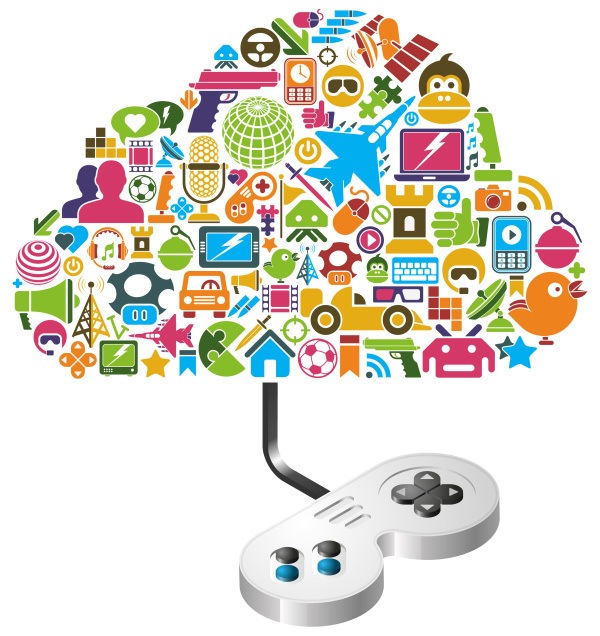Factors To Consider For Your Game-Based Learning Budget
eLearning games are all the rage, but will they help you improve online training ROI? Game-based learning can boost engagement and improve on-the-job performance. But only if you know your financial limits and create a realistic expense sheet. This will also help you secure funding from the accounting department to greenlight your GBL project. What costs are involved? How much should you set aside for payroll and necessary software? Is there a way to reduce spending without cutting corners? It’s time to delve into the game-based budgeting factors you need to consider when launching your gamification training program.

7 Top Items To Add To Your Gamification Budget And Tips To Reduce Expenses
1. Authoring Tools
Games require specialized authoring tools that allow for greater interactivity and immersion. Preferably, software that features built-in assets to reduce costs and speed up development. A great way to reduce this expense is to invest in a tool that’s compatible with your LMS and includes gamification templates. That way, you don’t have to worry about tool replacement costs or purchasing third-party layouts for your game-based learning activities. Another expense to think about is software add-ons and upgrades. Does the vendor charge more for bigger and better asset libraries that improve functionality?
2. L&D Payroll
Depending on the scope of your game-based learning project, you may need to hire additional staff for game development, such as SMEs, graphic designers, and ID pros. Even if you’re utilizing in-house talent, there’s still the small matter of payroll expenses. How many people will you need on the task? How long will they take to complete each stage of the project and launch the game on time? What resources do they require? Of course, you can always opt for outsourcing to avoid these internal payroll hours (see item #7 on this game-based budgeting checklist).
3. Multimedia
An effective training game features characters, realistic settings, and other immersive elements. In other words, multimedia that enriches the experience and draws learners in, as well as evokes an emotional connection. Will you develop video clips, cut-out characters, and other assets in-house? Are you going to purchase them from a third-party content website? Do you already have resources you can repurpose to reduce costs? For example, you might be able to reuse video clips from that hour-long webinar you recorded last year. Or encourage employees to create assets for your next training game, such as sound bites and task demos.
4. Game Upkeep
Even games solely for entertainment release patches and new versions from time to time. Look at how many expansions there are for The Sims franchise. There are two key reasons to maintain your training games. The first is to verify accuracy. There may be new rules or task protocols you need to incorporate. The second is to boost employee engagement. Modern learners expect the latest technology, not a serious game that looks like it dates back to the early 2000s with outdated objectives. Save on game upkeep by penciling regular updates into your schedule. Re-evaluate GBL resources once or twice a year to ensure they’re still on point. Of course, this should be more often for topics that are in constant flux, such as compliance issues.
5. Tie-In Resources
You can’t simply upload a game and hope the information sticks or that employees change negative behaviors. You must also include tie-in resources to help them bridge gaps they discover during the game. For example, tutorials, video demos, and simulations to help them build targeted skills. How much does it cost to create these support tools? How much time will it take? And is it more prudent to outsource or assign it to your L&D team?
6. Seat Time
All the above game-based budgeting factors deal with the development end. However, you must also consider front-end users. How much time do they need to familiarize themselves with the game controls? What about finishing the game and accessing follow-up resources? Calculate the amount of seat time for every activity and add that to your budget. Employees must still be paid for their time even if they aren’t on the sales floor or taking calls. Which brings us to the question: is it best to concentrate on full-length games or JIT support tools? Longer games delve into more complex topics to improve knowledge comprehension and avoid fragmentation, while shorter games are ideal for quick skill-bridging and task recaps.
7. Content Outsourcing
You can bypass all of these gamification budgeting factors if you outsource (except seat time). But is it more cost-effective for your organization? Is your team already overburdened by other tasks or can they comfortably handle game-based learning development? Get their input to determine the best option in your price bracket. They can also help you re-evaluate your budget to look for problem areas. Such as upkeep tasks that might be less expensive if they’re outsourced to trained eLearning professionals, or resources and software you’ve overlooked that could drastically reduce your budget.
Conclusion
Game-based learning can drain your resources if you fall into the common traps such as not choosing the right tool or trying to dive into the gamification deep end from day one. Start with clear objectives and know your budgetary limitations. You can also start with a test project to determine the timeline, price point, and implementation steps that are involved. This gives you a better idea of how much you’re going to spend on a comprehensive GBL training strategy.
Choose an eLearning content provider who works in your price bracket and helps you stretch your training budget. Our online directory features the top gamification design vendors in your industry. You can even read reviews to see who delivers the best customer service.
Download the eBook Going For Gold: How To Choose The Best Game-Based Learning Solutions For Your Budget to improve employee engagement and cut costs.









